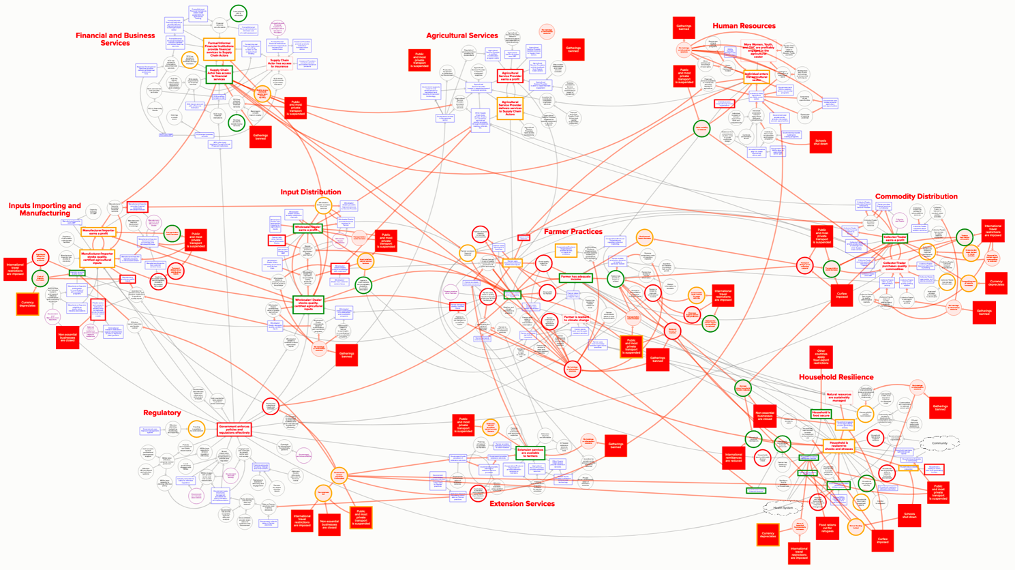
Through an engagement with USAID/Uganda, our team (the Feed the Future Market System Monitoring Activity) developed the System Pathways Toolkit, a framework for mapping and measuring complex systems. The approach was adapted from causal loop diagrams and modified to be accessible to development practitioners. At its core, the approach involves building system maps and adding data layers to the maps, allowing practitioners to understand how systems are organized and monitor change in a system. Over time, the approach also supports practitioners in assessing the resilience of a system.
In the spring of 2020, USAID/Uganda asked our team to conduct a rapid assessment of the surging pandemic’s impact on agricultural markets and food security in Uganda using this innovative systems mapping approach. In particular, they were interested in anticipating the impact of the preventative measures implemented by the Government of Uganda in response to COVID-19. Our team had already developed a detailed map of the Ugandan agricultural market system, which was an essential foundation for our analysis. Our team already had an understanding of the system, both how it is organized and how its constituent parts are interconnected. This is incredibly valuable when a shock or crisis occurs – an existing system map allows practitioners to quickly contextualize each new development and understand its broader implications.
We then developed a Rapid System Assessment approach, which builds on our methodology to quickly deliver system insights under conditions of limited information. As a sense-making strategy, using a system map helps to organize information that is constantly being updated in a systematic way, and enables practitioners to visualize the status of a system. Structuring the analysis in this way also enables decision-makers to frame the situation in a way that allows them to act dynamically and anticipate how the system will change over time. The approach allows practitioners to respond quickly, anticipate the impact of a shock, process incoming information, and monitor the impact over time. We were also able to anticipate how the shock would propagate through the system and the second and third-order effects.
The analysis focuses on a few key subsystems, which represent the parts of the system that are most closely linked to USAID’s current market system development programming in Uganda. The objective was to inform USAID’s response to the situation and provide guidance on which parts of the system should be monitored going forward.
The work products from this assessment are available at the following links:
- Webinar: A Systems Approach to Collaborating, Learning, and Adapting (CLA)
- Rapid System Assessment Methodology
- Uganda Agriculture Market System Map with COVID-19 shock
- Guide to interpreting the COVID-19 shock map
- Update Report No 1: Representing the Shock & Initial Hypotheses
- Update Report No 2: Deep-Dive on Agricultural Inputs
- Update Report No 3: Deep-Dive on Commodity Distribution
- Update Report No 4: Executive Summary
- Update Report No 4: Deep-Dive on Smallholder Farmers & Final Recommendations
We also recorded a podcast about this and related work during the COVID-19 pandemic.
